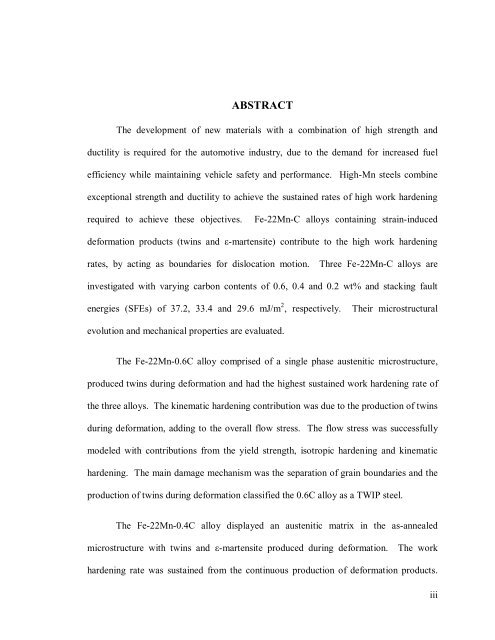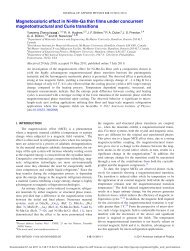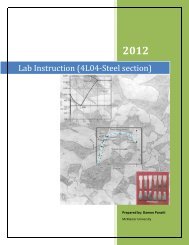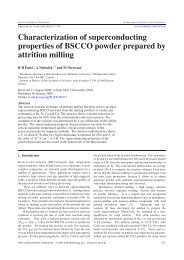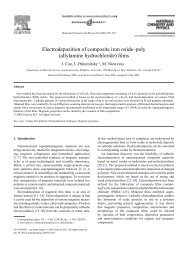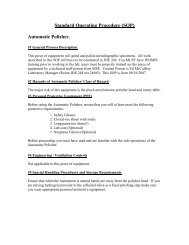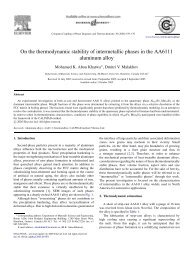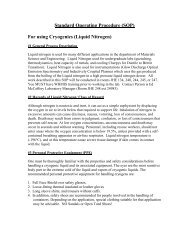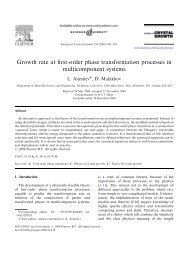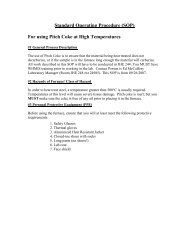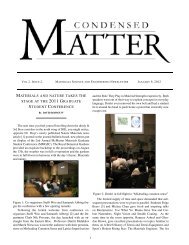the effect of carbon content of the mechanical properties - McMaster ...
the effect of carbon content of the mechanical properties - McMaster ...
the effect of carbon content of the mechanical properties - McMaster ...
You also want an ePaper? Increase the reach of your titles
YUMPU automatically turns print PDFs into web optimized ePapers that Google loves.
ABSTRACT<br />
The development <strong>of</strong> new materials with a combination <strong>of</strong> high strength and<br />
ductility is required for <strong>the</strong> automotive industry, due to <strong>the</strong> demand for increased fuel<br />
efficiency while maintaining vehicle safety and performance. High-Mn steels combine<br />
exceptional strength and ductility to achieve <strong>the</strong> sustained rates <strong>of</strong> high work hardening<br />
required to achieve <strong>the</strong>se objectives. Fe-22Mn-C alloys containing strain-induced<br />
deformation products (twins and ε-martensite) contribute to <strong>the</strong> high work hardening<br />
rates, by acting as boundaries for dislocation motion. Three Fe-22Mn-C alloys are<br />
investigated with varying <strong>carbon</strong> <strong>content</strong>s <strong>of</strong> 0.6, 0.4 and 0.2 wt% and stacking fault<br />
energies (SFEs) <strong>of</strong> 37.2, 33.4 and 29.6 mJ/m 2 , respectively. Their microstructural<br />
evolution and <strong>mechanical</strong> <strong>properties</strong> are evaluated.<br />
The Fe-22Mn-0.6C alloy comprised <strong>of</strong> a single phase austenitic microstructure,<br />
produced twins during deformation and had <strong>the</strong> highest sustained work hardening rate <strong>of</strong><br />
<strong>the</strong> three alloys. The kinematic hardening contribution was due to <strong>the</strong> production <strong>of</strong> twins<br />
during deformation, adding to <strong>the</strong> overall flow stress. The flow stress was successfully<br />
modeled with contributions from <strong>the</strong> yield strength, isotropic hardening and kinematic<br />
hardening. The main damage mechanism was <strong>the</strong> separation <strong>of</strong> grain boundaries and <strong>the</strong><br />
production <strong>of</strong> twins during deformation classified <strong>the</strong> 0.6C alloy as a TWIP steel.<br />
The Fe-22Mn-0.4C alloy displayed an austenitic matrix in <strong>the</strong> as-annealed<br />
microstructure with twins and ε-martensite produced during deformation. The work<br />
hardening rate was sustained from <strong>the</strong> continuous production <strong>of</strong> deformation products.<br />
iii


